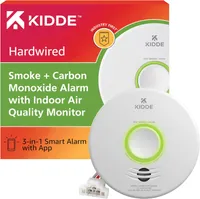Best smart smoke detectors in 2025
The best smart smoke detectors add a layer of connectivity to this essential device in your home.
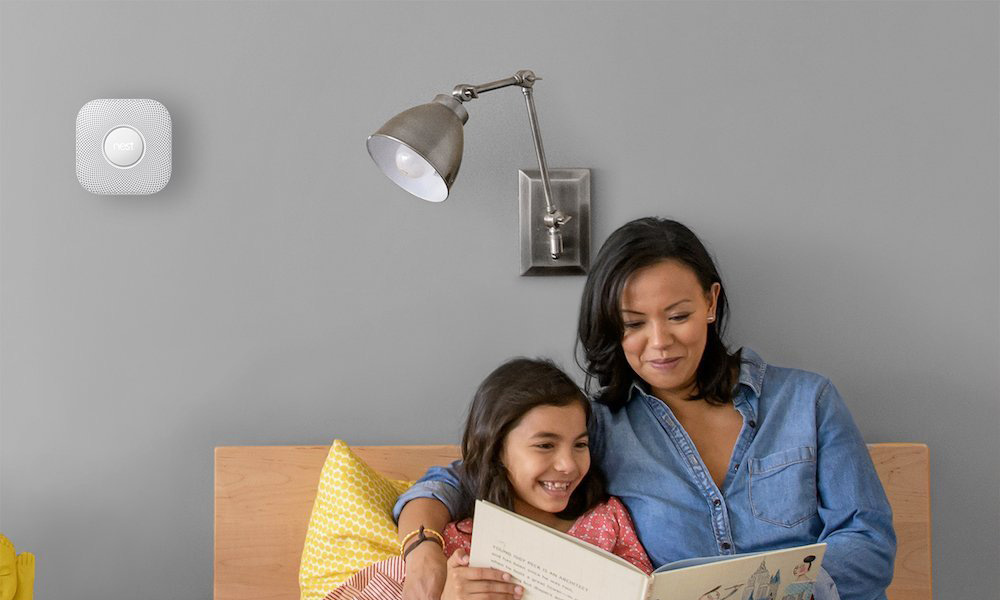
The best smart smoke detectors go beyond sounding an alarm inside your house— they can also instantly send an alert to your smartphone so you can call emergency services. That extra warning time can mean the difference from light damage to a total loss in an emergency.
Our favorite pick — but by no means perfect — is the First Alert SC5 Battery Smart Smoke & Carbon Monoxide Alarm. It replicates much of what we liked about the Nest Protect (you can mix and match hardwired and battery-powered units, for instance), but it's not quite as good as what it's replacing. And, each unit costs $129.
The best value is the X-Sense Smart Smoke/Carbon Monoxide Detector Combo, which gets you a pack of five interconnected alarms for around $200. However, this kit doesn't include any hardwired alarms, which may be a dealbreaker for those who have newer construction. And, while you can have it send you an alert to emergency services, you can't connect it to any smart home platforms.
If you already have non-smart smoke detectors in your home, the least expensive route to take is to use a smart speaker to listen for the sound of a smoke alarm.
If you have one of the best Alexa speakers, you can sign up for Alexa Emergency Assist ($7.99/month, $79/year). When enabled, your Alexa smart speakers will listen for smoke and CO2 alarms, and will send you an alert on your smartphone if they hear a siren, as well as connect you with an urgent response agent.
Alternatively, if you have a Nest Aware subscription (starting at $6/month), you can set your Google Home speakers to listen for alarms, which will then send you an alert on your smartphone.
The Apple HomePod mini, as well as the Apple HomePod (2nd generation) can also listen for smoke and CO2 alarms, and send an alert to your phone. Unlike Alexa and Google Home, using this feature does not require a subscription.
The best smart smoke detectors you can buy today
Why you can trust Tom's Guide
Best overall
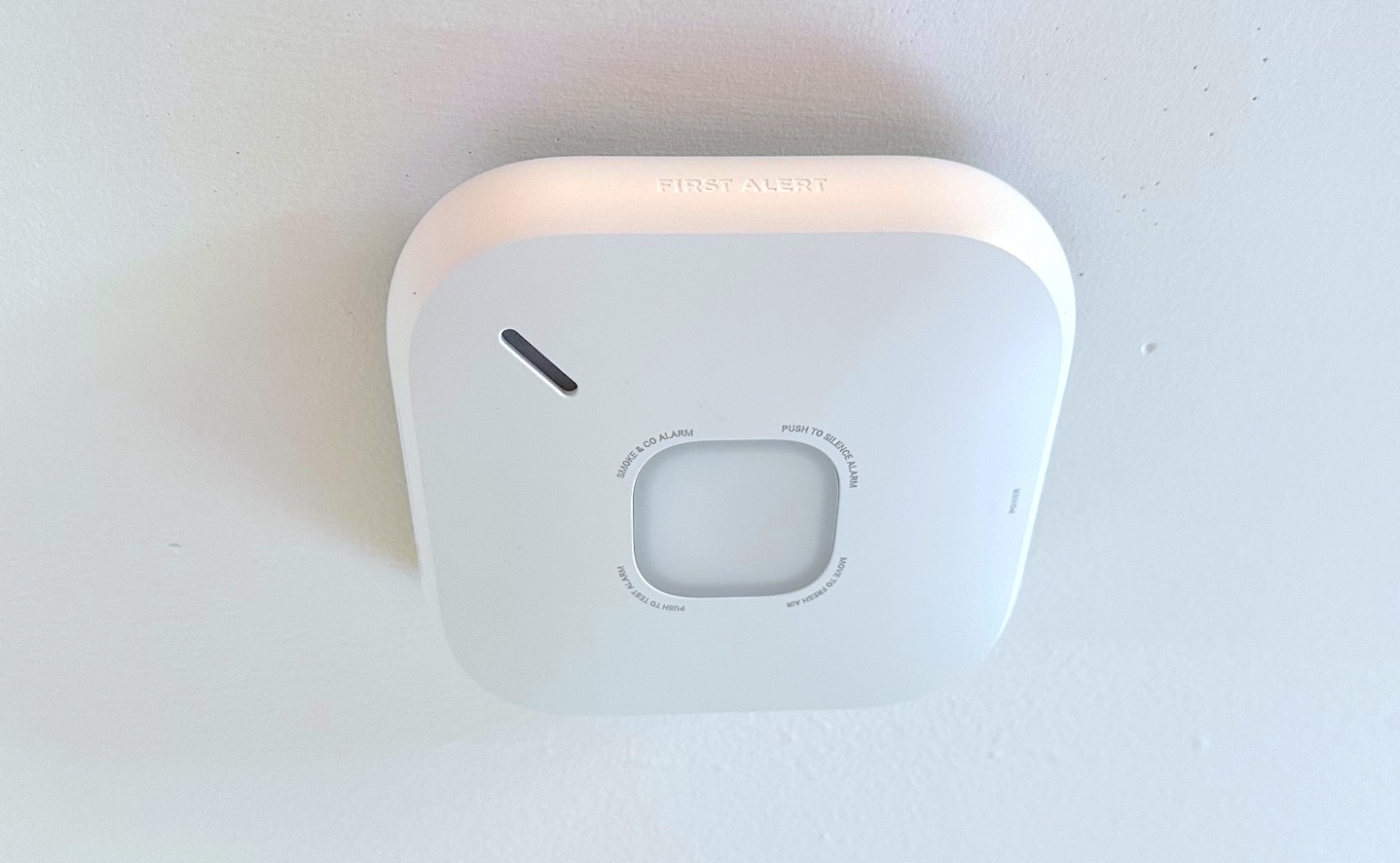
First Alert SC5 Battery Smart Smoke & Carbon Monoxide Alarm
Our expert review:
Specifications
Reasons to buy
Reasons to avoid
The First Alert SC5 Battery Smart Smoke & Carbon Monoxide Alarm takes the place of the now-discontinued Nest Protect, and for the most part, does pretty much the same things, making it the best option for those invested in the Google Home ecosystem. However, it feels a little.. less, so while it has the top spot, there's room for improvement.
Similar to the Nest Protect, the SC5 has a squarish shape with rounded corners, and can be purchased as either battery-powered or a hardwired unit. Even better, you can mix and match them, giving you more flexibility for homes that require hardwired alarms.
The SC5 also uses both electrochemical and photoelectric sensors, meaning it should be as adept at smoldering as well as fast-burning fires.
If you’re upgrading from a Nest Protect, there’s even more good news: The SC5 uses the same mounting bracket, so you don’t need to go drilling more holes in your house.
Setting up the SC5 is a simple matter of downloading the First Alert app, scanning a QR code on the device, and connecting it to Wi-Fi, and then linking it to the Google Home app. It took me all of 10 minutes.
Like the Nest Protect, the SC5 gives audio warnings. For instance, one morning I was making pancakes and overheated the pan; the SC5 announced “There is smoke in the kitchen. The alarm may sound.” However, compared to the Nest Protect, the SC5’s voice was much quieter and had less personality, and you can’t adjust its volume.
Also gone is the pathlight feature of the Nest Protect; at night, the Nest Protect’s light would illuminate if it sensed your presence, which was super helpful if you’re walking downstairs at night, and didn’t want to turn on any lights.
At $129, the First Alert SC5 is the same price as the now-discontinued Nest Protect, but it is not quite as good. However, it may be the best choice for those who are looking to replace their now-expired alarms.
Best value
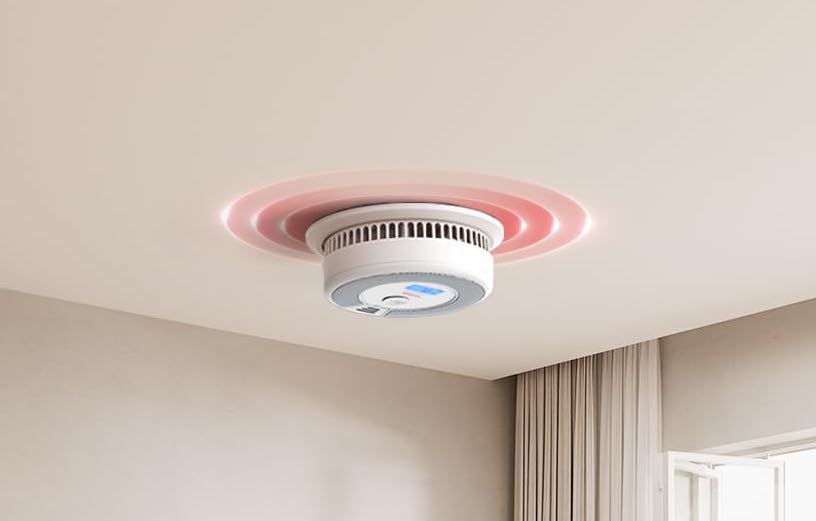
2. X-Sense Smart Smoke/Carbon Monoxide Detector Combo
Our expert review:
Specifications
Reasons to buy
Reasons to avoid
One feature I really like in a smart smoke detector is interconnectivity; that is, if one alarm goes off, they all go off, giving you a better chance of hearing that there's a problem. However, many of the best smart smoke detectors with this feature require them to be hardwired, which could be an issue in older homes.
Like the Nest Protect, the X-Sense Smart Smoke/Carbon Monoxide Detector Combo will activate all of its alarms if one of them senses trouble. And, they're battery-powered, so you can easily put them in any room you like. What's more, you get five alarms for just under $200, so you can affordably cover most of your house.
X-Sense's alarms are a bit different, in that they require you to first install a hub, which acts as a wireless bridge between the alarms and the cloud. Setting up the hub wasn't all that difficult, though, and installing the alarms and linking them to the hub was equally painless.
X-Sense's app is also a cinch to use, and provides real-time info on each alarm, its battery level, and if it's sensing anything. You can also use the app to configure each alarm in terms of volume and the tone it sends out.
However, none of X-Sense's smart smoke detectors have the option to be hardwired, which means that they may not be compatible with newer construction which requires at least one alarm to be hardwired.
Up to 12 people can connect to the app, so more than one person can get an alert if an alarm goes off. If you want extra peace of mind, you can also subscribe to X-Sense's professional monitoring service (powered by Noonlight), so emergency responders will be dispatched to your house in the event of a fire.
About the only thing I wish the X-Sense would have is a link to other smart home services, such as Alexa or Google Home. Otherwise, it's a pretty good value for the price.
Be sure to be mindful of its placement: I put one a few feet outside the door to my bathroom, and the X-Sense was triggered when it detected a blast of hot air and steam from my shower. However, it did set off all the other alarms in my house, so at least I know it works.
Best for whole-home coverage
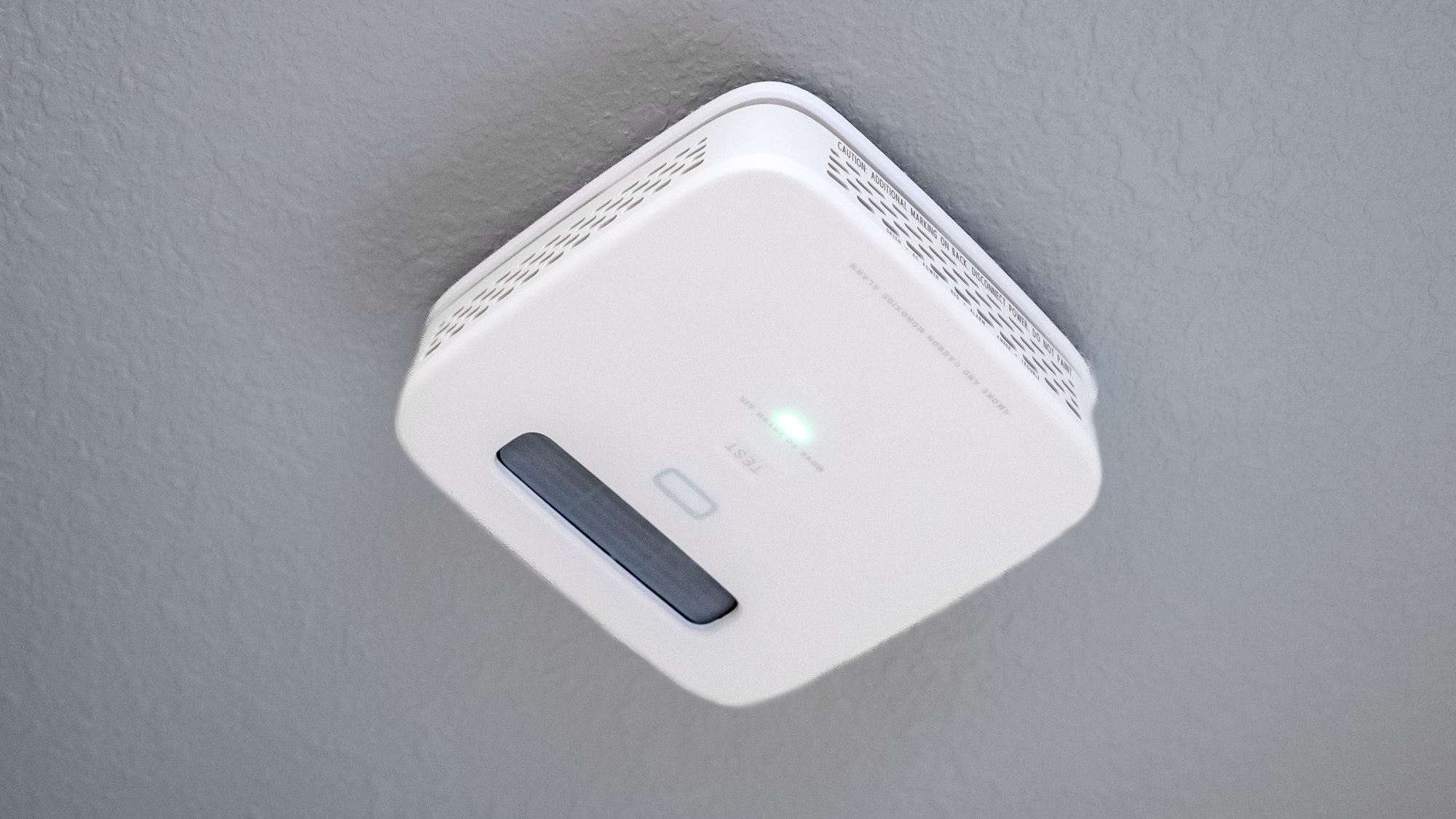
Specifications
Reasons to buy
Reasons to avoid
Rather than a one-size-fits-all smoke and carbon monoxide detector, Place sells a range of detectors that are customized for specific rooms of your home.
For example, the Place Kitchen can detect smoke, carbon monoxide, natural gas, VOCs, as well as temperature and humidity. The Place Garage monitors heat, VOCs, temperature and humidity, and has a 1080p camera. The Place Nursery can monitor smoke, carbon monoxide, air quality, temperature, humidity, and VOCs, and has a 1080p camera. There's also a base model that only detects smoke and carbon monoxide.
Place's alarms need to be hardwired to work, though they do all have a battery backup. While the look of the alarms isn't the most attractive, we did find Place's app very easy to use, and liked the fact that we could see both temperature and humidity from all of the sensors.
The Place Nursery's camera delivered good video, but the fact that the device needs to be hardwired means that its placement might not give you the best view of your kid in their room. And, it doesn't have the advanced features, like cry detection, that you get in a dedicated baby monitor.
Lastly, the Place detectors don't work with any smart home system, which is probably their biggest miss. But overall, Place's detectors represent an interesting departure from most other smart smoke detectors.
Read our full Place smart smoke detector review.
Best for Alexa


Specifications
Reasons to buy
Reasons to avoid
The Amazon Echo Dot doesn't have a smoke detector built in, but if you subscribe to Alexa Emergency Assist ($59/year), it can listen for smoke and CO2 detectors (as well as glass breaking), and alert you on your smartphone if if hears something. This way, you can keep your older smoke detectors, but still get a notification on your phone if you're away and something's amiss.
Apart from that, it's also a great little smart speaker on its own. For the price, the sound is more than good enough as a personal listening device. It also has presence and temperature sensors built in. and it can double as an eero Wi-Fi satellite, should you want to extend the reach of your mesh Wi-Fi system in your home.
Read our full Amazon Echo Dot review.
Best for HomeKit
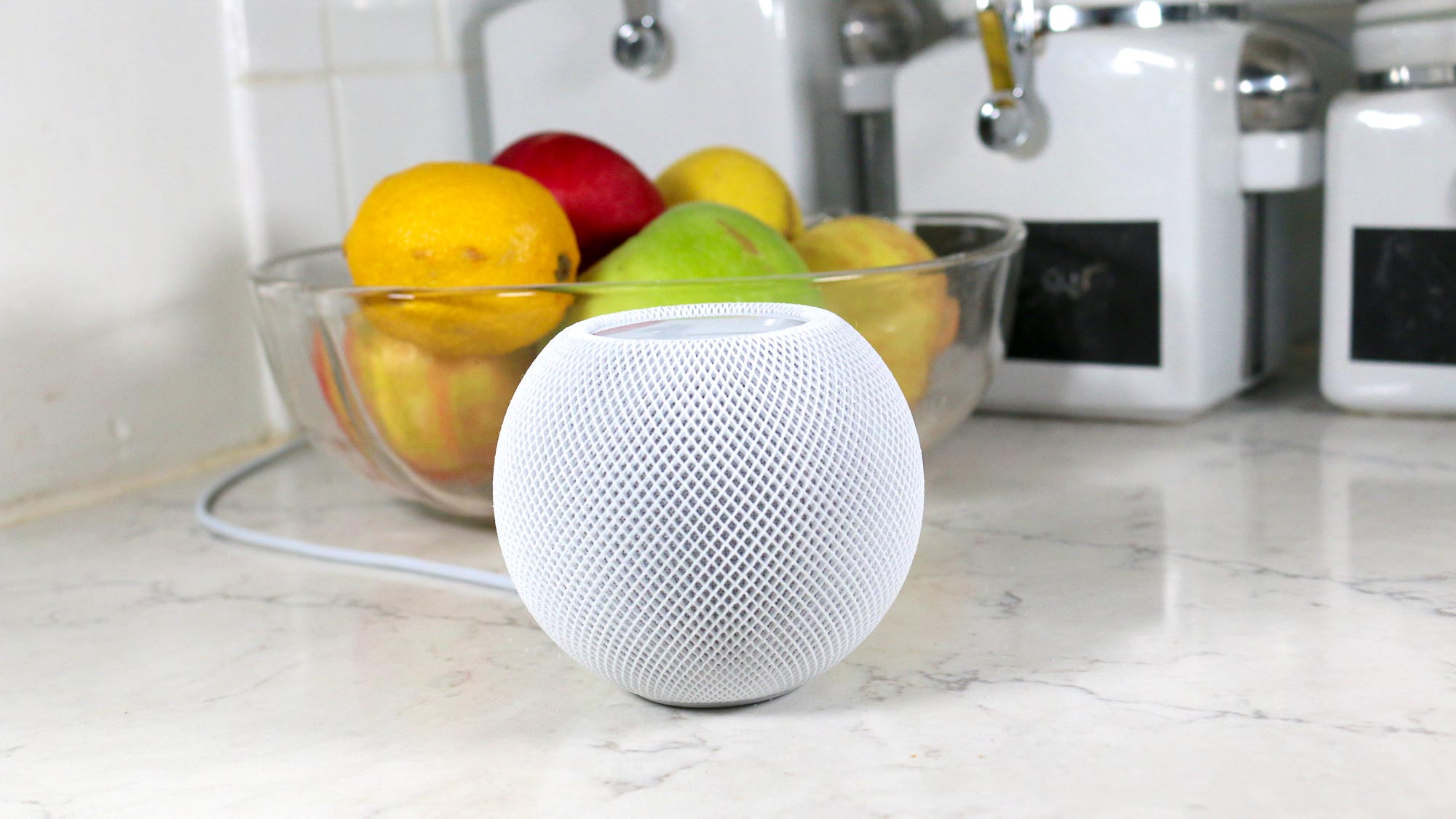

Specifications
Reasons to buy
Reasons to avoid
Like the Amazon Echo Dot, the Apple HomePod mini isn't a smart smoke detector in its own right, but it can listen for the sound of a smoke or carbon monoxide alarm going off, and then alert you via the HomeKit app on your phone, tablet, or Apple Watch. Even better: If you have a security camera on HomeKit, the notification will also display an image from that camera, making it easier to see if there's a true emergency, or if it's just a false alarm.
Apart from these abilities, the HomePod mini is a great little smart speaker in its own right, delivering great audio for its size, and bettering the Amazon Echo. It also has a temperature and humidity sensor, can be paired with another HomePod mini for stereo sound, and comes in a variety of colors.
The Apple HomePod 2 also has this ability, so Apple's premium smart speaker is worth checking out if you're looking for better-quality audio, and don't mind its higher asking price.
Read our full Apple HomePod mini review.
Also consider
This model not only detects smoke and carbon monoxide, but also monitors your air quality. It also connects to your Wi-Fi so you can receive alerts on your phone, and works with Alexa and Google Home. However, it requires a hardwired connection.
How to choose the best smart smoke detector
Fire and smoke detection sensors
All smoke detectors use one of two types of sensors to detect fires. Ionization-type sensors are best at detecting fast-burning fires, while photoelectric sensors are generally better at alerting you about smoldering, or slow-burning fires. You should have both types of alarms in your house. Smoke alarms such as the Nest Protect are designed to pick up both types of fires.
Carbon monoxide and other gas detection
Even if you don't have a fire in your home, you can be suffocated by carbon monoxide. A good detector should also protect you against this.
Hardwired vs. battery-powered
If your home has hardwired alarms, they will all be interconnected, so that if one goes off, they all will go off. Hardwired alarms also receive their power from your home, and only use batteries as backups. Standalone detectors run on batteries alone, so they may need to be replaced more often, and cannot signal each other in the event of an emergency. However, it's a lot easier to mount standalone smoke detectors where you need them.
Regardless of whether the alarms you purchase are battery-powered or wired, you should look to purchase alarms that are interconnected, as they're give you a much better chance of waking you in the event of a fire.
How we test the best smart smoke detectors
To determine which smart smoke detector is best, we first install them in our home, to see how easy it is to get up and running. We then evaluate their app and user interface, as they need to be intuitive even for non-techie homeowners. If the device is compatible with Alexa or Google Assistant, we also factor that into our review.
Where applicable, we also take into consideration the type of smoke and carbon monoxide detection built into the device. And, where possible, we use a simulated smoke spray to ensure that it actually works.
For greater detail on our testing methodology and rating system, please go to our how we test page for more information.
Smoke detector FAQs
What are the types of smoke detectors?
Most smoke detectors fall under one of two types:
Ionization-type sensors are best at detecting fast-burning fires.
Photoelectric sensors are generally better at alerting you about smoldering, or slow-burning fires. You should have both types of alarms in your house.
Additionally, can purchase smoke alarms that are either standalone or interconnected; most organizations recommend interconnected alarms, as in the event of a fire, every alarm in your home will sound, which increases the chance you'll hear it and escape safely.
As of July 2024, a new standard for smoke alarms was adopted by the National Institute of Standards and Technology, with the aim of reducing false alerts. Now, smoke detectors must be good at detecting both fast-burning and smoldering fires, but not be so sensitive as to be triggered by food cooking.
To pass this test, two standardized hamburger patties are broiled 10 feet away from a smoke alarm. If the alarm doesn't go off, it passes the test.
Where should I place a smoke detector?
The National Fire Protection Association recommends you should have smoke detectors mounted in the following locations:
- Inside and outside each bedroom in your house
- In your living room (or den or family room) or near the stairway to the upper level, or in both locations.
- In the basement, on the ceiling at the bottom of the stairs leading to the next level.
Smoke alarms should be mounted on the ceiling or high up on a wall. If you have a ceiling that has a peak, the smoke detector should be placed within three inches from the top, but at least four inches down from the peak.
Smoke alarms should also be mounted at least 10 feet from any cooking appliance to minimize false alerts.
Do not place a smoke detector near a window, door leading outside, or near a ventilation duct.
How often should you replace your smoke detectors?
A smoke detector should be replaced every 10 years, according to the U.S. Fire Administration. That's because the sensors inside the alarm deteriorate, and lose their effectiveness over time. However, you'll most likely have to replace the smoke detector's battery more than once over its lifespan.
How often should you test your smoke alarms?
In general, you should test your smoke alarms every month to make sure they still work. You can test most of them by pressing the center button; if you hear it sound, then you know it's working. Most smoke alarms will emit an intermittent beep when their battery is running low on power.
More from Tom's Guide
Best smart light bulbs | Best smart locks | Best video doorbells | Best water leak detectors | Best home security cameras | Best smart thermostats
Get instant access to breaking news, the hottest reviews, great deals and helpful tips.

Michael A. Prospero is the U.S. Editor-in-Chief for Tom’s Guide. He oversees all evergreen content and oversees the Homes, Smart Home, and Fitness/Wearables categories for the site. In his spare time, he also tests out the latest drones, electric scooters, and smart home gadgets, such as video doorbells. Before his tenure at Tom's Guide, he was the Reviews Editor for Laptop Magazine, a reporter at Fast Company, the Times of Trenton, and, many eons back, an intern at George magazine. He received his undergraduate degree from Boston College, where he worked on the campus newspaper The Heights, and then attended the Columbia University school of Journalism. When he’s not testing out the latest running watch, electric scooter, or skiing or training for a marathon, he’s probably using the latest sous vide machine, smoker, or pizza oven, to the delight — or chagrin — of his family.
 Club Benefits
Club Benefits





